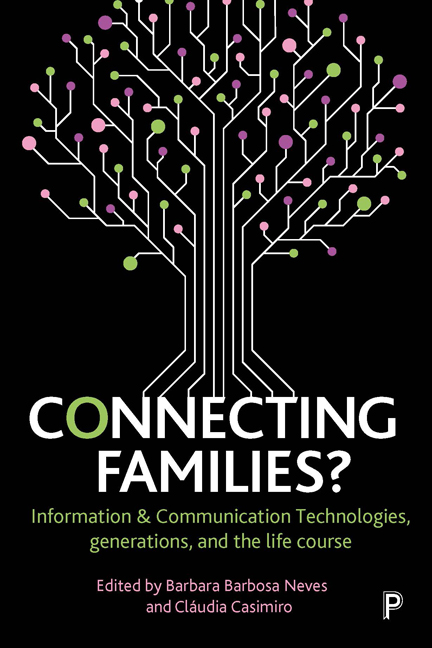Book contents
Afterword - Digital connections and family practices
Published online by Cambridge University Press: 22 April 2022
Summary
As digital technologies – used socially for information, communication or entertainment – allow for new ways of living social life and of knowing about it, it is increasingly significant that we inquire about the crucial matter of what the digital does to the ways we know about each other, how we live, and what social scientists can learn from and with the digital.
An important point for investigation of changes linked to digital connections is that there is no proper or clear boundary between what more traditional information and communication technology (ICT) is – and how we have so far referred to it – and the current digital technologies used for information and communication, which have fully moved into mainstream with the prominence of social media (Berker et al, 2005). In the process of social change, technological innovation and adoption happen unevenly and not concomitantly. What matters is that digitally powered technologies are increasingly around us, a daily component of our lives, whether we are engaged with it ourselves – moving across space and time, emailing, phoning, searching for information, tweeting – or by our simply being in contemporary settings, be they rural, urban, remote, cosmopolitan or traditional. Living in a digitally connected world affects all kinds of our social practices – and relationships. Family is one of those.
However, a focus on family does not claim specialness for the exploration of the digital. Here family is simply context, situation, and site for linkages of relationships. These have something to do with marriage, partnership, parenthood or kinship, be these formally or informally recognized (Morgan, 1996). While these relationships could be described in different ways, for example as unmarried people living together, biological parents caring for children, and so on, I focus on all sorts of relationships to do with family practices (involving people living together and ‘doing’ family), to inform a way of looking at domestic, everyday connections in flow, in movement (that is, not marked by legal or biological – or any other – frameworks). I privilege certain family connections in the reflections I make in this paper: intergenerational, sexual, intimate and fractured in space through migration and borders.
- Type
- Chapter
- Information
- Connecting Families?Information and Communication Technologies, Generations, and the Life Course, pp. 273 - 294Publisher: Bristol University PressPrint publication year: 2018



